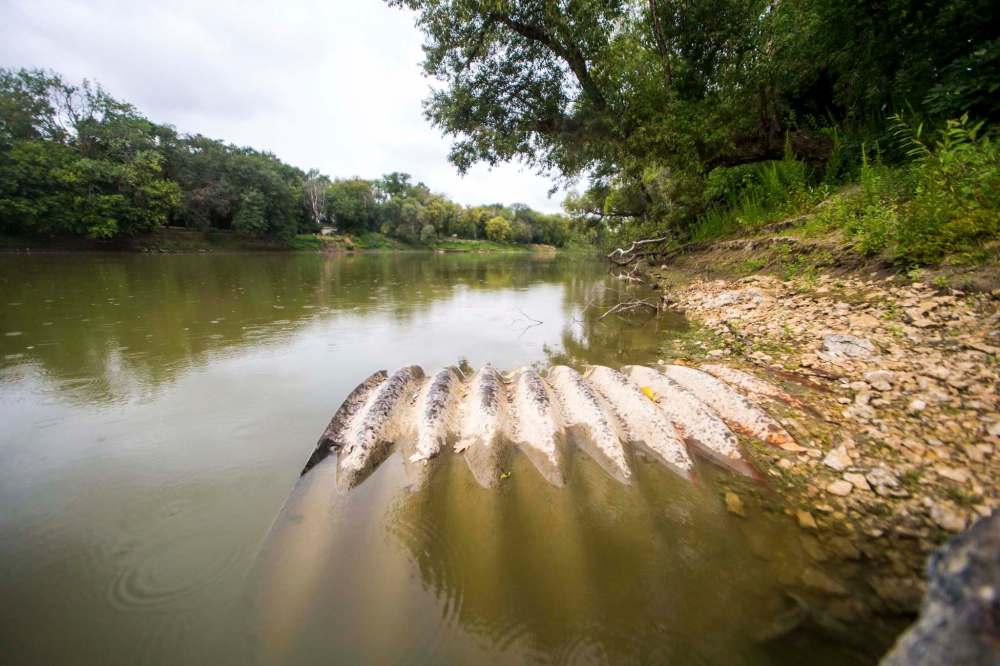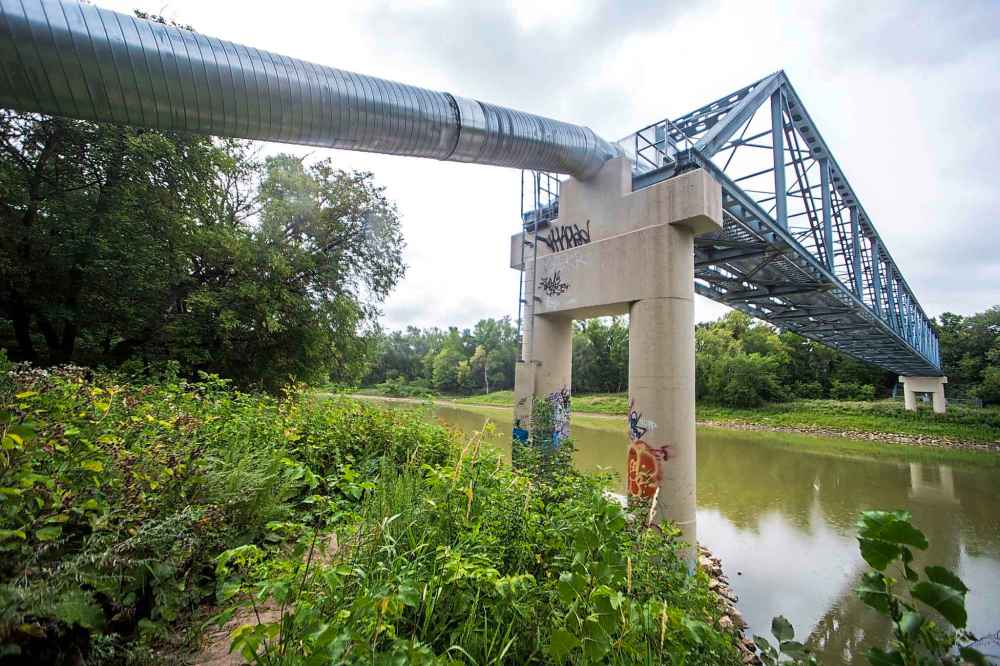City blames power failure for massive raw sewage discharge into Assiniboine
Read this article for free:
or
Already have an account? Log in here »
To continue reading, please subscribe:
Monthly Digital Subscription
$0 for the first 4 weeks*
- Enjoy unlimited reading on winnipegfreepress.com
- Read the E-Edition, our digital replica newspaper
- Access News Break, our award-winning app
- Play interactive puzzles
*No charge for 4 weeks then price increases to the regular rate of $19.00 plus GST every four weeks. Offer available to new and qualified returning subscribers only. Cancel any time.
Monthly Digital Subscription
$4.75/week*
- Enjoy unlimited reading on winnipegfreepress.com
- Read the E-Edition, our digital replica newspaper
- Access News Break, our award-winning app
- Play interactive puzzles
*Billed as $19 plus GST every four weeks. Cancel any time.
To continue reading, please subscribe:
Add Free Press access to your Brandon Sun subscription for only an additional
$1 for the first 4 weeks*
*Your next subscription payment will increase by $1.00 and you will be charged $16.99 plus GST for four weeks. After four weeks, your payment will increase to $23.99 plus GST every four weeks.
Read unlimited articles for free today:
or
Already have an account? Log in here »
Hey there, time traveller!
This article was published 29/08/2018 (2659 days ago), so information in it may no longer be current.
Millions of litres of raw sewage poured unabated in Winnipeg’s Assiniboine River late Sunday and early Monday, marking the largest local spill on record in years.
The latest leak pushes the annual tally for sewage dumped into the city’s rivers past 20 million litres.
While the city’s combined sewer system routinely discharges diluted sewage into the rivers during heavy rainfalls or snowmelts, this time it was raw sewage due to a power outage at a wastewater treatment facility in Wolseley.

Monday’s incident comes at the tail end of a dry summer, which means water levels are low and the rivers vulnerable to high concentrations of sewage.
“This is not the highly diluted stuff that gets dumped when there’s sewage runoff. The key thing is: how much rain have we gotten?” said Candi Bezte, water caucus manager for the Manitoba Eco-Network.
“It’s been a very dry year, which means the current discharge values for the Assiniboine River are extremely low. What that means is that there’s very little water, so when something like this happens there’s a higher percentage of the water that’s sewage.”
In total, 3.26 million litres were dumped into the river overnight Sunday following a power outage.
According to the City of Winnipeg website, which has a page dedicated to tracking sewage spills, an alarm went off at the McPhillips Control Centre notifying an operator of the power outage at 11:45 p.m.
A standby crew and a backup generator were immediately dispatched to the station. One station pump was back up and running by 1:10 a.m. and Manitoba Hydro crews managed to restore power to the facility by 5:41 a.m.
The fact that the power outage took place during a heavy downpour left the facility particularly vulnerable to leaking untreated sewage, a city spokeswoman wrote in an email to the Free Press.

“If a rainfall event had not occurred during the power outage, it is likely we would have been able to prevent untreated sewage from entering the river,” she said.
It was the largest local spill since roughly five million litres of raw sewage was dumped into the Red River in January 2016. It’s also the second time a power outage has led to a leak at the Wolseley facility this year; 2.4 million litres leaked into the Assiniboine on June 14.
The city spokeswoman said that on Sunday night and Monday morning 29 of the city’s 39 combined sewer overflow locations reported discharges into rivers.
“The combined sewer system worked as designed, releasing untreated diluted sewage into the river, instead of having it cause damage to property owners through sewer backups,” she wrote.
Bezte said that while a leak into one of the city’s rivers is always a concern, normally when there’s a runoff the sewage is so diluted that it’s virtually a “drop in the bucket.”
This time around, however, Bezte said due to the Assiniboine’s current low water levels the latest leak is a “quite notable amount.”
“Normally the concentration of the sewage when entering the water isn’t that high, which is actually a positive thing. But that isn’t to say this isn’t a problem, because it is. It’s something we want to deal with,” she said.

In November 2017, Manitoba Sustainable Development gave the city until 2045 to capture 85 per cent of the diluted sewage that flows in the Assiniboine and Red rivers during an average year.
That would require putting significant resources towards replacing a portion of the city’s combined sewers. The city previously estimated it would cost $1 billion in construction costs to meet the target on time.
ryan.thorpe@freepress.mb.ca
Twitter: @rk_thorpe
Top-five sewage leaks in 2018:
Aug. 28: Assiniboine River
Amount — 3.26 million litres
Cause — power failure
March 28: Red River
Amount — 3.16 million litres
Cause — power failure
Feb. 14: Assiniboine River
Amount — 2.8 million litres
Cause — water main leak
June 14: Assiniboine River
Amount — 2.4 million litres
Cause — power failure
June 3: Assiniboine River
Amount —1.5 million litres
Cause — power failure
History
Updated on Wednesday, August 29, 2018 12:09 PM CDT: Adds poopbot timeline
Updated on Wednesday, August 29, 2018 5:04 PM CDT: full write-thru
Updated on Wednesday, August 29, 2018 5:07 PM CDT: updates photos, sidebar










